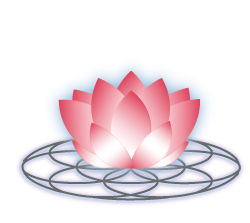Chronic pain is defined as pain persisting longer than 3 months, and based on Pain Canada, 8, 000,000 people in Canada live with chronic pain. Chronic pain affects the mental and physical health of those experiencing it and can inhibit their ability to be active in their lives - this includes enjoying time with family and friends, working, and their quality of life.
Based on a study done in 2011, done by Dr. Schopflocher, et al; Alberta had the second-highest prevalence of chronic pain in Canada in 2007 with 20.6% reporting persistent pain, while British Columbia reported 21.8%. This was a while ago, and it would be reasonable to assume that this number has increased since. 35.5% of surveyors experiencing pain reported lower back pain, making it the most common area of pain, followed by upper back with 15.4% and knee with 14.9%. Of those surveyed, 22.5% reported that they have been experiencing chronic pain for 20+ years with their last pain flare-up being at least a 5/10 (10 = worst), and 40% of the surveyors had experienced pain for 2-10 years.
With the amount and duration of pain experienced, there’s no doubt that these people have tried anything and everything in their power to decrease their pain. Unfortunately, the most common prescription for pain is opioid drugs - which are highly addictive and have contributed to the opioid crisis. As a result, alternatives are being sought after as a way to decrease pain without causing addiction. Photobiomodulation (PBM) is one of these therapies that are of interest.
Photobiomodulation has many different mechanisms of action that can lead to a decrease in pain, and it is a very safe therapy, with few side effects. This makes PBM a very promising therapy to use for pain management. It is able to create more ATP energy in the cells by interacting with cytochrome C oxidase in the mitochondria increasing membrane potential. It also reduces swelling and inflammation, increases circulation, increases nerve regeneration, increases collagen and cartilage production and increases bone formation. This last one is particularly helpful with fractures, while the other are extremely helpful for healing in general.
In acute cases, the sooner and more regularly you can come for PBM, the better it is for outcomes. That being said, it can help with chronic pain or difficulty healing as well, it is common for more chronic concerns to take longer to heal than the typical 5-10 treatments. Treatment time is depended on the area being treated, with most areas requiring between 30 or 45 minutes.
If you are interested in learning more about PBM, I have linked additional blogs below for you to enjoy. Otherewise, if you want to book an appointment for PBM, click the link below to book with Dr. Charmagne.
~Dr. Charmagne
Other Blogs:
Photobiomodulation (AKA Low-Level Light Therapy)
Citations:
Schopflocher D, Taenzer P, Jovey R. The prevalence of chronic pain in Canada. Pain Res Manag. 2011 Nov-Dec;16(6):445-50. doi: 10.1155/2011/876306. PMID: 22184555; PMCID: PMC3298051.
Li BM, Zhang CK, He JH, Liu YQ, Bao XY, Li FH. The Effects of Photobiomodulation on Knee Function, Pain, and Exercise Tolerance in Older Adults: A Meta-analysis of Randomized Controlled Trials. Arch Phys Med Rehabil. 2023 Jul 5:S0003-9993(23)00375-1. doi: 10.1016/j.apmr.2023.06.016. Epub ahead of print. PMID: 37419235.
Chow RT, Armati PJ. Photobiomodulation: Implications for Anesthesia and Pain Relief. Photomed Laser Surg. 2016 Dec;34(12):599-609. doi: 10.1089/pho.2015.4048. Epub 2016 Jul 15. PMID: 27419354.
Alayat MSM, Battecha KH, Elsodany AM, Alzahrani OA, Alqurashi AKA, Jawa AT, Alharthi YS. Effectiveness of Photobiomodulation Therapy in the Treatment of Myofascial Pain Syndrome of the Upper Trapezius Muscle: A Systematic Review and Meta-Analysis. Photobiomodul Photomed Laser Surg. 2022 Oct;40(10):661-674. doi: 10.1089/photob.2022.0056. Epub 2022 Oct 10. PMID: 36219747.
Barbosa LM, de Luna Gomes JM, Laureano Filho JR, do Egito Vasconcelos BC, Dantas Moraes SL, Pellizzer EP. Does the use of low-level light therapy postoperatively reduce pain, oedema, and neurosensory disorders following orthognathic surgery? A systematic review. Int J Oral Maxillofac Surg. 2022 Mar;51(3):355-365. doi: 10.1016/j.ijom.2021.06.006. Epub 2021 Jul 6. PMID: 34238645.
Huang Z, Ma J, Chen J, Shen B, Pei F, Kraus VB. The effectiveness of low-level laser therapy for nonspecific chronic low back pain: a systematic review and meta-analysis. Arthritis Res Ther. 2015 Dec 15;17:360. doi: 10.1186/s13075-015-0882-0. PMID: 26667480; PMCID: PMC4704537.


